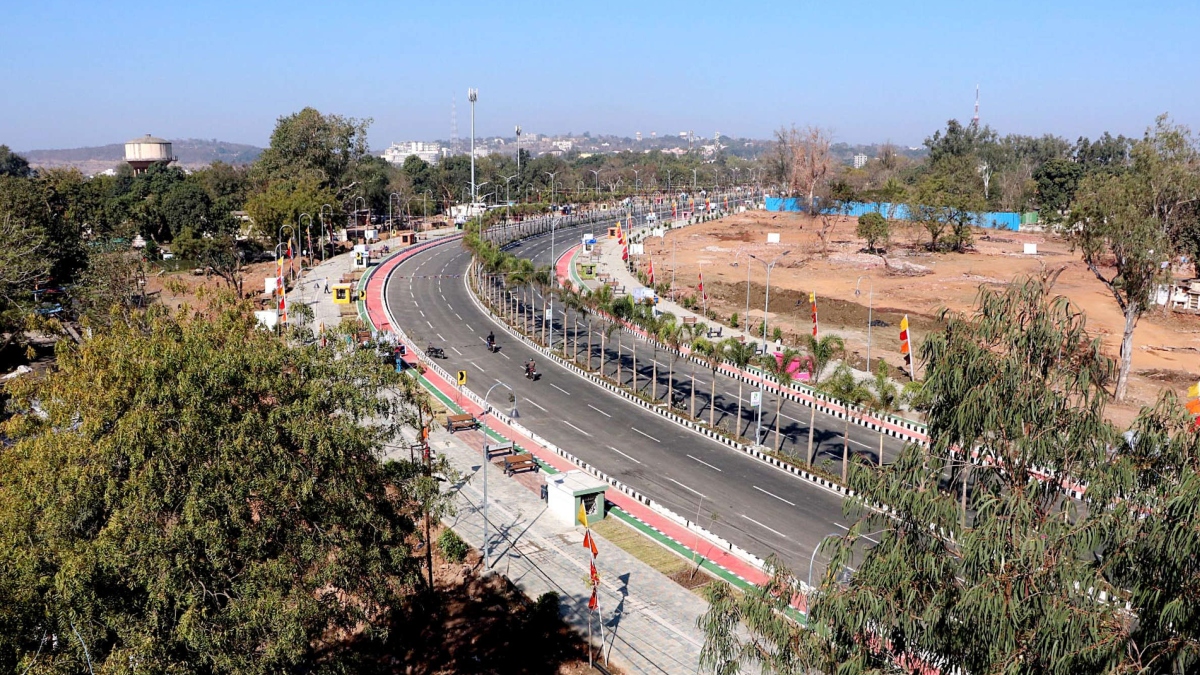


Chandigarh is arguably the best city in the country so far as quality of life goes. It is also one of the most well-planned townships created after Independence, and has the rare distinction of being the capital of two States—Punjab and Haryana. A brainchild of Swiss French Architect and Urban Planner, Le Corbusier, the city has inspired many new Capitals, Brasilia in Brazil being one of them. Back home, places such as Bhubneshwar in Odisha and Kalyan near Kolkata were designed keeping Chandigarh in mind.
However, Le Corbusier’s experience and visualization is evident both in the concept and planning of the new capital for Punjab at that time. He has left his indelible stamp on the city’s overall architecture in the same way as Baker and Lutyens vision lives on in New Delhi. On Saturday, Chandigarh completed 70 years after being inaugurated by the then President, Dr Rajendra Prasad on October 7, 1953.
The city was a gift to the people of Punjab who suffered immensely following the partition and Prime Minister Jawahar Lal Nehru along with erstwhile Chief Minister Bhim Sain Sachar, identified a cluster of villages to make way for its construction. For those who may not be aware of the events that preceded the inauguration, East Punjab was left with very few institutions and therefore the consequences of the partition had to be borne by the people.
To begin with, the capital of the state was shifted to Simla since Lahore went to Pakistan. The decision to have a new capital was taken by the Union Cabinet and Le Corbusier was drafted to give the final shape in form of modern architecture and designs. The Punjab University which was located in Lahore was divided and the science faculty as well as some departments moved to Delhi, Hoshiarpur, Shimla, Solan and a few other places. The first task was to acquire land and make it available for the city. There was resistance from many places, the most pronounced being from Bajwara village.
However, the government was determined to accomplish the task and amongst the early structures that came into existence was the Home Science College, whose auditorium was used by members of the Punjab Assembly to meet. Subsequently, the Secretariat, the Government college for Men and Government College for Women came up and the construction for the Punjab University Campus started. To begin with Sector 22 became the busiest market and later Sector 17 started being developed and Jagat Cinema there, followed by the Neelam Theatre and Kiran in Sector 22 became the places frequented by cinegoers.
Corbusier had planned only 30 sectors and his brilliance lay in the fact that he used the numeral 13 to enhance his design. For instance, all sectors which faced each other added up to a number which was divisible by 13. There was no 13 sector and the Sukhna Lake existed opposite Sector 26. Chandigarh did not have any original residents, other than the villagers whose land had been acquired and they too had mostly moved to other places. Dr K.K.Paul, former Delhi Police Commissioner who spent a good part of his childhood in the city has very fond memories of the period when Chandigarh was evolving.
His father, Prof. R.C Paul, later became the longest serving Vice Chancellor of the Punjab University, a position he held for over ten years. This is perhaps a distinction unmatched in North India. The city had its first hotels shortly after being commissioned—Aroma in sector 22 and Mount View in Sector 10. The Punjab Engineering College, the alma mater of Astronaut Kalpana Chawla was established and due to the vision of Chief Minister Pratap Singh Kairon, the Post Graduate Institute (PGI) came into being. Kairon lured some of the best doctors from Amritsar and other places in Punjab and drafted Dr Santokh Singh Anand and Dr P.N.Chutani to launch this ambitious project. Today PGI is amongst the most prestigious institutions in the country. After Lahore, The Tribune had shifted to Ambala but later re-located itself to Chandigarh.
The city was to begin with known for its large student population besides government employees and retired personnel who could be seen taking long walks at Sukhna lake every morning. Nek Chand established the Rock Garden and the Rose garden also became a major attraction for tourists. Because of the nature of its population, Chandigarh could not acquire an identity of its own for a long time. It takes years for any city to have a soul and in case of Chandigarh, it has come a long way but still has many more miles to go.
In 1966 when the reorganization of states took place and Haryana was carved out from Punjab, Chandigarh was declared as a Union territory and became the capital of these two states. Sector 17 became the most prominent commercial centre with a number of restaurants such as Piccadilly, Lyons, Mehfil and Ghazal standing out. Curly top was a prominent hair dressing unit initially and fast food became a rage with Hot Millions doing brisk business.
The Rehri Market produced new culinary delicacies and Tehal Singh for some time became a household name as did Birdies in the 1970s when Roast Chicken through infra-red cooking was introduced by an Australia returned entrepreneur. The Piccadilly group of Hotels and Cinema were also prominent land marks of the city. Interestingly even today when one visits Chandigarh, there are not too many people one can find, who had settled there since its inception. Most are migrants from other parts of Punjab and Haryana. With the expansion of the city, new sectors have been added thus throwing the original concepts and planning out of gear. While wishing a belated Happy Birthday to this beautiful township, located on the foothills of the Shivalik , one hopes that it finally acquires a soul and character and surpasses other modern cities such as Islamabad and Abuja which too are in search of their identities.